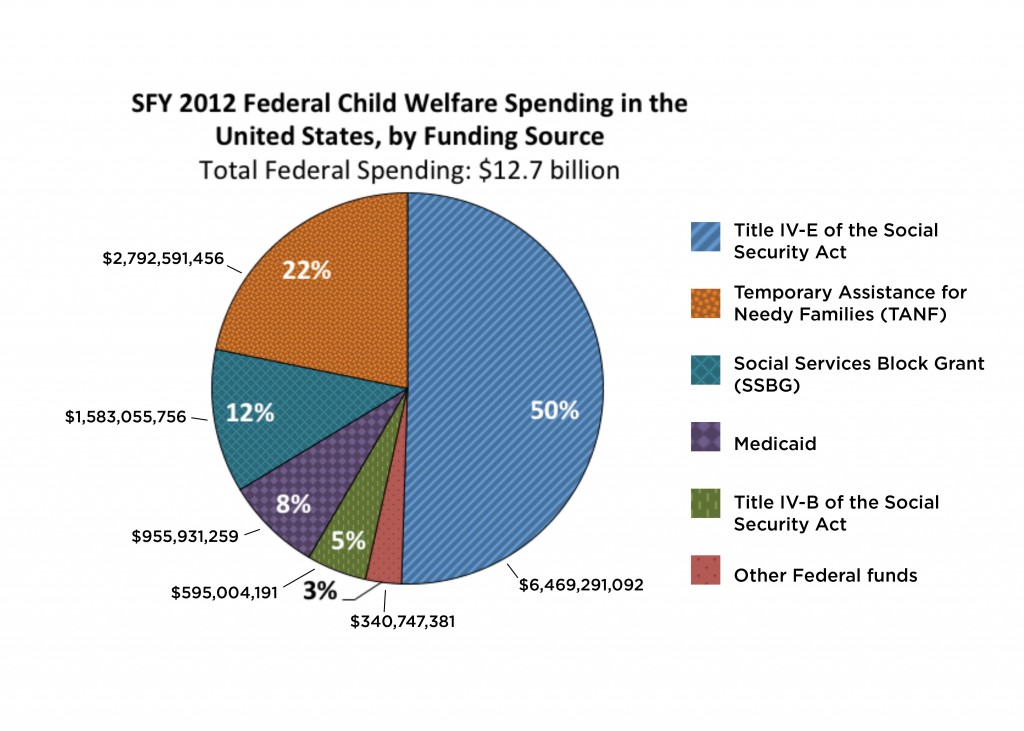You Should Understand How We Pay for Child Welfare Services
Author
For nearly a decade, Child Trends has been tracking how states fund child welfare activities. I love talking about child welfare funding, but I’ve noticed others’ eyes glaze over when I announce, for example, that [inlinetweet prefix=”” tweeter=”” suffix=”, per @ChildTrends”]states spent over $28.2 billion on child welfare activities in state fiscal year 2012[/inlinetweet] (the latest data available). Numbers are so abstract.
Those funds meant something major, though, to the 678,932 children who were victims of maltreatment in federal fiscal year 2013.
Now is a rare moment when folks are eager to talk about and understand child welfare financing. In 2016, the Senate Finance Committee will propose major changes to the way the federal government supports child welfare financing—through the introduction of the Families First Act.
As folks talk about this bill and the role it will play in the lives of children and families, here’s a bit of what we already know about child welfare financing, and what state leaders have to say about it.
In state fiscal year 2012, about half of the public dollars states used was federal. The two primary federal funding streams dedicated solely to child welfare financing are Titles IV-E and IV-B of the Social Security Act. Additional federal streams states can access for child welfare services and supports include Temporary Assistance for Needy Families (known as TANF), the Social Services Block Grant, and Medicaid.
The rest of the money was from states and localities. Federal money is easier to track, so we’ll focus on that. Here’s how spending of federal dollars breaks down:
As you can see, about half of federal funding for child welfare is from Title IV-E which supports foster care, adoption and guardianship assistance, and preparing youth in foster care for self-sufficiency. The catch is that Title IV-E has strict eligibility requirements. States cannot, for example, be reimbursed for services for children who remain in their homes.
Last spring, we spoke with fiscal leaders from 10 states about their strategies in funding child welfare activities. Not surprisingly, they told us of their desire to provide the variety of services that would better fulfill children’s needs. State leaders want that to be the true driving factor in their decision-making, rather than what they perceive to be overly restrictive parameters of various funding streams.
But those parameters—eligibility requirements and qualifying services—play a huge role in their fiscal decisions. Leaders said they do not have sufficient control over how to spend federal funds, the funds do not cover a wide enough variety of services, and that many children in need of services are ineligible.
Some states get around the restrictions of Title IV-E by applying for (and receiving) Title IV-E Child Welfare Waiver Demonstrations, allowing them to waive certain IV-E requirements. States are using the waivers to stabilize families at risk of child abuse or neglect, for child abuse hotlines, and for innovative or new initiatives to support the children and families in their states. Waivers last for five years and can be reinstated, and so far, 28 states plus the District of Columbia and one tribe have them. One of my favorite parts about the waivers is that funded activities must be evaluated—so the government can learn what’s working, and what isn’t.
Other factors agency leaders contend with in funding services, apart from federal requirements, include media attention, which can lead agencies to increase services to a certain population. Class action lawsuits on behalf of a group of children can lead to court-ordered changes in services or staffing. And the local economy, of course, plays a role. Children and families in the child welfare system have other needs, such as for health, education, and economic supports that may fall under the purview or finances of other agencies, also vying for funding.
Still, we can’t ignore the power of collaboration. State leaders told us they’ve partnered with other agencies to test and evaluate new approaches. Private foundations can provide powerful technical and financial support to states eager to try a new innovation. And a strong vision and state-level leadership can facilitate child welfare magic.
Through their child welfare agencies, states and counties support the most vulnerable children and families in our country. They provide critical supports and services to keep children safe and healthy. To see child welfare data from your state, visit the State Child Welfare Policy Database, managed through a partnership of Child Trends and Casey Family Programs.
© Copyright 2024 ChildTrendsPrivacy Statement
Newsletter SignupLinkedInThreadsYouTube